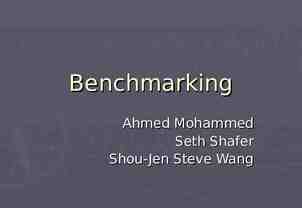Plain Language: A tool to improve health literacy Brought to you
14 Slides433.42 KB
Plain Language: A tool to improve health literacy Brought to you by the Minnesota Health Literacy Partnership
Outline Scope of the problem What is plain language? Why is plain language important? Elements of plain language Consequences of not using plain language Resources http://www.nationalacademies.org/hmd/Reports/2004/Health-Literacy-A-Prescription-to-End-Confusion.aspx
Scope of the problem Nearly half of all American adults (90 million people) have basic or below basic health literacy skills, leading to difficulty understanding and acting on health information Cultural, language and communication barriers – together or alone – lead to misunderstandings between patients and their health care providers http://www.nationalacademies.org/hmd/Reports/2004/Health-Literacy-A-Prescription-to-End-Confusion.aspx
What is plain language? Plain language is: A tool for improving health literacy Communication your audience can understand the first time they hear or read it Language that allows people to find what they need, understand what they find, and act appropriately on that understanding http://www.plainlanguage.gov/whatisPL/
What plain language is not Plain Language is NOT: Dumbing it down or attempting to be folksy Stripping out necessary medical, insurance or legal information Imprecise https://www.nih.gov/institutes-nih/nih-office-director/office-communications-public-liaison/clear-communication/plain-language
Why use plain language? Plain Writing Act of 2010: Requires federal agencies to use “clear Government communication that the public can understand and use” Patients have the right to understand health care information that is necessary for them to safely care for themselves, and to choose among available alternatives. Health care professionals have a duty to provide information in simple, clear and plain language, and to check that patients have understood the information before ending the conversation. http://www.plainlanguage.gov/plLaw/index.cfm The 2005 White House Conference on Aging; Mini-Conference on Health Literacy and Health Disparities http://www.ihs.org/documents/literacy/Iowa%20Health%20System%20Health%20Literacy%2009.pdf https://www.hhs.gov/ohrp/regulations-and-policy/guidance/informed-consent/index.html#
Plain language also Makes your message stand out Improves communication Shows patient focus Eliminates barriers Improves patient safety Reduces time spent explaining Improves compliance https://www.nih.gov/institutes-nih/nih-office-director/office-communications-public-liaison/clear-communication/plain-language https://www.cdc.gov/healthliteracy/developmaterials/plainlanguage.html
Elements of plain language Common words: Use simple, easy-to-understand words. Try not to use medical or insurance jargon. Define medical and insurance terminology. Keep it short: Stick to 1-3 ideas. Remove words you don’t need. Use short sentences. Active voice: Identify who is doing what. Keep the subject up front. https://www.nih.gov/institutes-nih/nih-office-director/office-communications-public-liaison/clear-communication/plain-language https://www.cdc.gov/healthliteracy/developmaterials/plainlanguage.html https://www.archives.gov/open/plain-writing/10-principles.html http://www.coveringkidsandfamilies.org/resources/docs/stylemanual.pdf
Elements of plain language continued Positive tone: Write and speak in a friendly tone. Think about what can be done, not what can’t. Logical organization: Put the most important points first. Break down complex information into understandable pieces. Easy-to-read design features: Use bullet points, headings, subheadings, pictures and tables. https://www.nih.gov/institutes-nih/nih-office-director/office-communications-public-liaison/clear-communication/plain-language https://www.cdc.gov/healthliteracy/developmaterials/plainlanguage.html https://www.archives.gov/open/plain-writing/10-principles.html http://www.coveringkidsandfamilies.org/resources/docs/stylemanual.pdf
Consequences of not using plain language Poor health outcomes Higher health care costs Consumer misunderstanding Less adherence to treatment plans and how to take medicine Trouble accessing and using health care services and insurance benefits Frustration when interacting with health and insurance professionals Difficulty managing chronic conditions and health http://www.nationalacademies.org/hmd/Reports/2004/Health-Literacy-A-Prescription-to-End-Confusion.aspx AMA Foundation, Help patients understand, a manual for clinicians. http://www.med.fsu.edu/userFiles/file/ahec health clinicians manual.pdf
Consequences of not using plain language continued Unnecessary support calls caused by unclear instructions Poorly filled out or incomplete forms and applications Health messages that fail to motivate and engage consumers in healthy behaviors and preventive care Unclear memos and letters that require endless clarification Litigation http://www.nationalacademies.org/hmd/Reports/2004/Health-Literacy-A-Prescription-to-End-Confusion.aspx AMA Foundation, Help patients understand, a manual for clinicians. http://www.med.fsu.edu/userFiles/file/ahec health clinicians manual.pdf
Take the #PlainPledge How to take the Plain Pledge 1. Write down a health-related word that you promise to stop using or better explain. 2. Take a photo of yourself with the pledge sign. 3. Share the photo on social media with the hashtag #PlainPledge @UAMS CHL and tag us @MNHealthLit #PlainPledge is a registered trademark of the UAMS Center for Health Literacy
Together we can make a difference! Goals: Train health care providers Empower patients Share resources Mission: Working together to improve the health of all Minnesotans through clear communication Minnesota Action Plan to Improve Health Literacy (2016) Website: http://healthliteracymn.org/
Additional resources Minnesota Health Literacy Partnership NIH plain language training Plainlanguage.gov Federal plain language guidelines Center for Plain Language CDC Plain Language Thesaurus for Health Communications Making HIPAA Privacy Notices More Readable Acknowledgements: LauRen Gaines, MPH University of Minnesota School of Public Health Intern, Minnesota Health Literacy Partnership (provided through the Community Health Initiative University of Minnesota diversity.umn.edu/bced/chi ) Minnesota Health Literacy Partnership members & Alisha Odhiambo, MA, LMFT Chair, MN Health Literacy Partnership



















